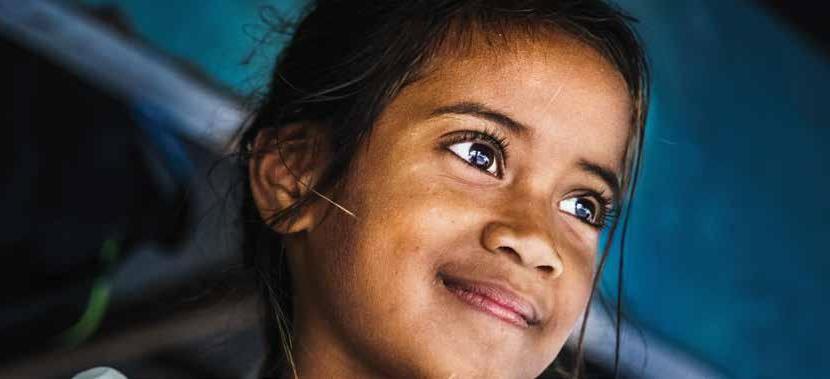
5 minute read
Executive summary
An agenda for our changing Region
Advertisement
This White Paper sets out thematic priorities for WHO work in the Western Pacific Region for the coming five years, as well as a series of ideas for collectively responding to current and future health challenges. It was developed following extensive consultations with Member States, partners and World Health Organization (WHO) staff in the Western Pacific Region.
The document articulates a shared vision: acting today to address the challenges of tomorrow, with the goal of making the WHO Western Pacific Region the healthiest and safest region.
The Western Pacific Region is rapidly – and constantly – changing. Unprecedented economic growth, migration and urbanization in the Region have created opportunities for better lives that many people could not have imagined a generation ago.
Yet progress has also created new health challenges: the ever-present risk of health emergencies and the emergence of new health security threats; changing consumption patterns and rapid urbanization that have led to an increase in noncommunicable diseases (NCDs); and air pollution, climate change and other environmental changes that put people’s health at risk. At the same time, some countries’ populations are rapidly getting older, while others are still facing a significant burden of disease from “traditional” health threats, including infectious diseases and infant and maternal mortality. And while rapid development has created new opportunities for some people, others risk being left behind as that development also has fuelled greater health and gender inequity, poverty and disadvantage – all of which are drivers of poor health.
The health challenges of today – and tomorrow – are unprecedented in scale and complexity, and addressing them will require greater creativity, more innovation and stronger partnerships. At the same time, demographic shifts also represent opportunity: planning ahead for population ageing, for instance, creates opportunities for people to live not only long, but also healthy and happy, lives.
While the 37 countries and areas in our Region are incredibly diverse, the Western Pacific Region’s strength in health is in its pursuit of a shared collective agenda that has been the foundation for many of the Region’s extraordinary health achievements. Capitalizing on the vast experience, expertise and ingenuity of the Region, aligning with the new set of global strategic priorities for the WHO encapsulated in the Thirteenth General Programme of Work (GPW 13), and building on our tradition of solidarity, this document is about how WHO and Member States write the next chapter of the Western Pacific Region’s story: to become the healthiest and safest region in the world. The health challenges of today – and tomorrow – are unprecedented in scale and complexity, and addressing them will require greater creativity, more innovation and stronger partnerships.
Focused on the future: our strategic priorities

The evolving nature of the challenges facing Member States in the Western Pacific Region demand that WHO also evolves: not just to provide “more” support on the issues Member States see as their greatest challenges for the future; in some cases, different kinds of support will be required.
Four main priorities have emerged as the issues where this is the case – reflecting the Western Pacific’s unique economic, social and environmental context:
Health security, including antimicrobial resistance
Climate change, the environment and health NCDs and ageing
Reaching the unreached – people and communities still afflicted by infectious disease, and high rates of maternal and infant mortality
New ways of working to address future challenges
NCDs, health security, and the health impacts of climate and environmental change are not new issues, but they require new thinking and new ways of working. Population ageing is not a burden – rather, it can be an opportunity – if we plan ahead. And reaching those still afflicted by infectious diseases and communities where too many mothers are dying at birth requires going beyond a business-as-usual approach.
To reorient our work in this way, in the coming five years WHO will focus on the following ways of working which are aligned with the strategic direction of GPW 13, but were developed mindful of the Region’s particular circumstances, capacities and challenges:
1. 2. 3.
4. 5. 6. 7.
Finding new approaches to meet future challenges (innovation) Working backwards from the longer-term goal (backcasting) Taking a systems approach, with universal health coverage as the foundation Building solutions from the ground up (grounds up) Driving and measuring country impact Promoting health, beyond the health sector Strategic communications.
These tools will help us to drive strategic, long-term dialogue with countries for the purpose of transforming and “future-proofing” countries’ health systems, supported by strategic partnerships for health and development. In all of our work, WHO will apply a gender and equity lens to ensure that everyone benefits equally from regional progress towards better health.
In order to deliver on the change agenda outlined above, WHO clearly needs to continue to reflect on changing how we work as an organization – including our organizational structure, budget and resource allocation, staff development, and management and accountability practices. We will seek to make WHO a health-promoting, “green” workplace. And we will continue to strengthen our work in countries by working with all countries to address the common agendas outlined in this document, as well as working with each country and area in response to its specific priorities and concerns – recognizing that while countries of the Region have much in common, every country is different.
Fig. 1. Thematic priorities and operational shifts
Delivering on the change agenda
2009
Country focus
2019
For the Future
NCDs and ageing
Climate change, the environment and health
Reaching the unreached Operational shifts
• Innovation • Backcasting • Systems approach, universal health coverage as the foundation • Grounds up • Measurement & impact • Health beyond the health sector • Strategic communications
Capacity/enablers Human resources, admin., etc.
Healthiest and safest region









